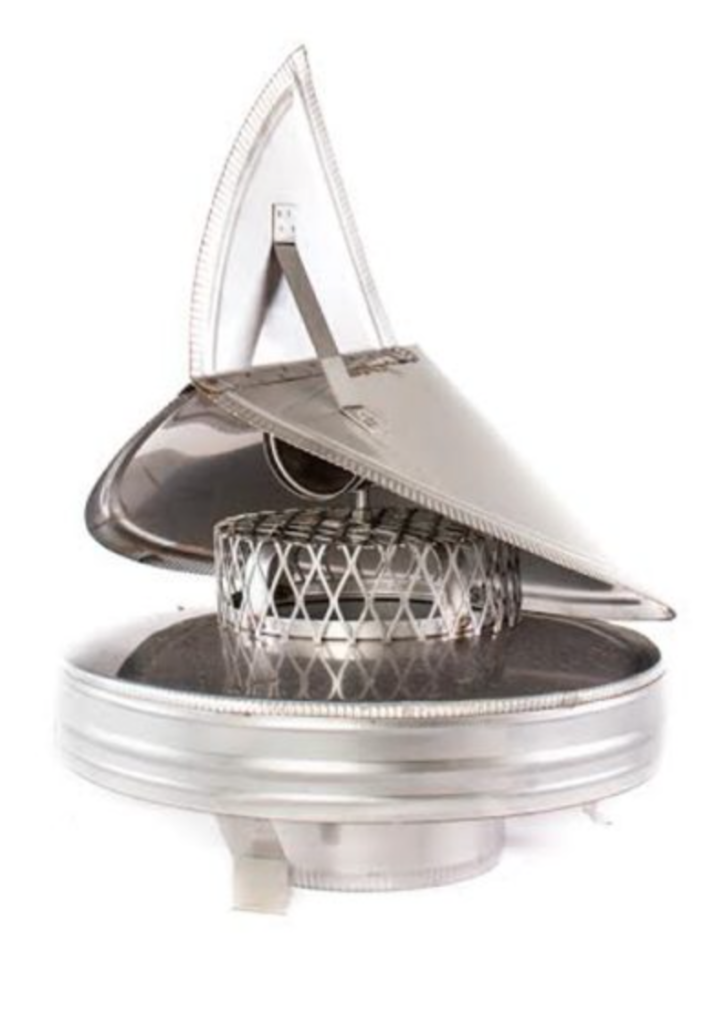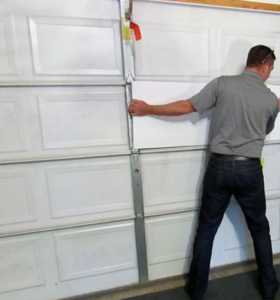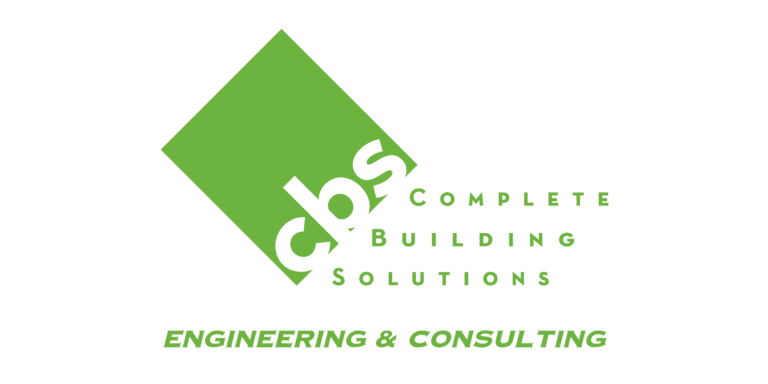What is a chimney cap-

A chimney cap is a metal covering that sits on top of the chimney. It is an essential chimney component that acts as a gatekeeper; deterring critters and water from entering the chimney and allowing other things like smoke and carbon monoxide to exit. Many chimneys would be in much better condition if a chimney cap had been installed (or installed correctly).
What is the purpose of a chimney cap-

Chimney caps serve several purposes such as preventing sparks from exiting the chimney and keeping things like water, debris, and critters outside where they belong.
Let’s dig more into this.
Water-
If you read our other blogs you will know that water is a home’s #1 enemy. So, when we talk about preserving buildings or building components for long periods of time, the first thing we’d suggest is driving water away from the structure.
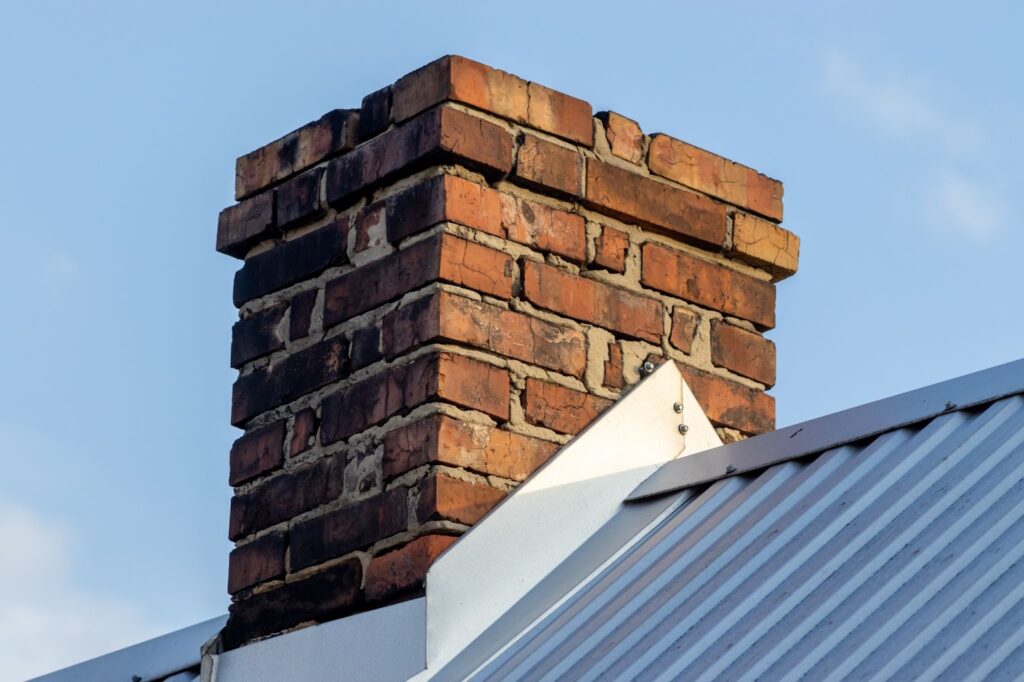
The same thing goes for keeping water out of your chimney. Chimney caps are the only thing standing between a rainstorm and the interior of your chimney. If your home is located in a cold climate, keeping rain out of the chimney interior is even more important due to the damages that can occur from the freeze thaw cycle.


Other problems to watch out for are a) when water and soot mix creating an acid-like substance that can cause damage to the chimney flue or masonry and b) water traveling down the chimney and moving into the interior of the home can damage drywall and even framing components.
Side note- it’s also extremely important that your chimney was waterproofed correctly when your roof was put on. If not, you may start experiencing leaks in your home. If you’re having issues with this contact a contractor who understands the intricacies of properly flashing and waterproofing a chimney.
Critters- A chimney without a chimney cap is an invitation for animals such as birds and squirrels to build nests and wreak havoc. Of course these animals will not enter if you have an active fire going 24/7, but during summer months this is not usually the case. Calling pest control is never fun and these animals can actually cause some real damage inside the chimney. A chimney cap will do just the trick to prevent any unwanted visitors.
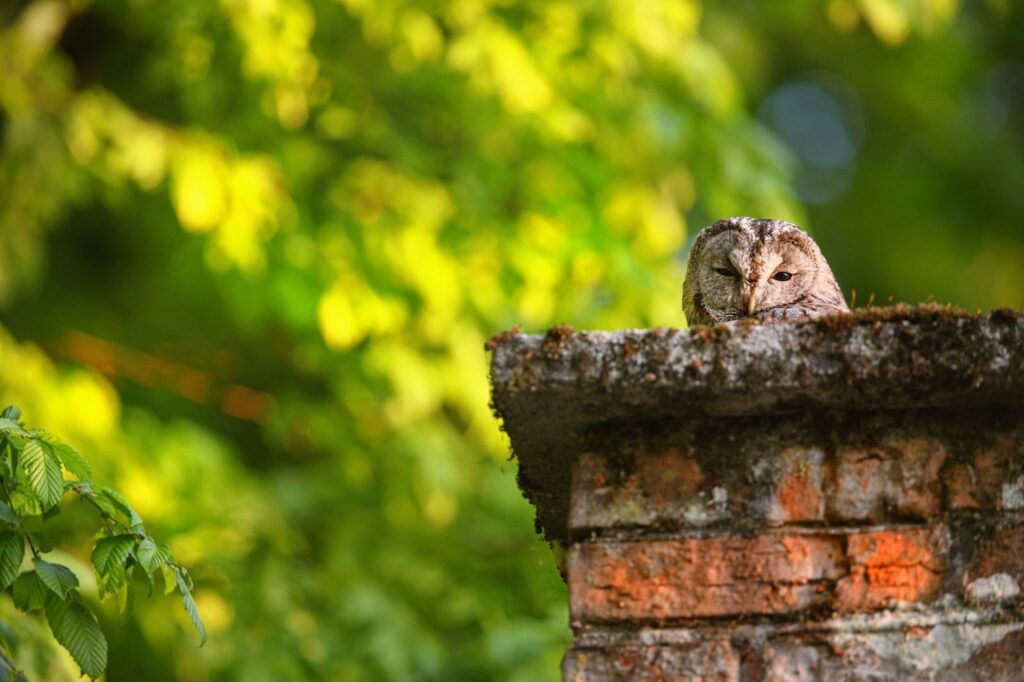
Debris- Storms are notorious for blowing debris such as branches and leaves into a chimney. When this happens, blockages can occur creating smoke to pour into the home. This is a very dangerous situation. A chimney cap with a screen will prevent debris from entering the chimney, but this doesn’t negate the need for annual chimney inspections.
Sparks- Chimney caps with screens will catch sparks and prevent them from moving outside the home and igniting surrounding roofing or foliage on fire.
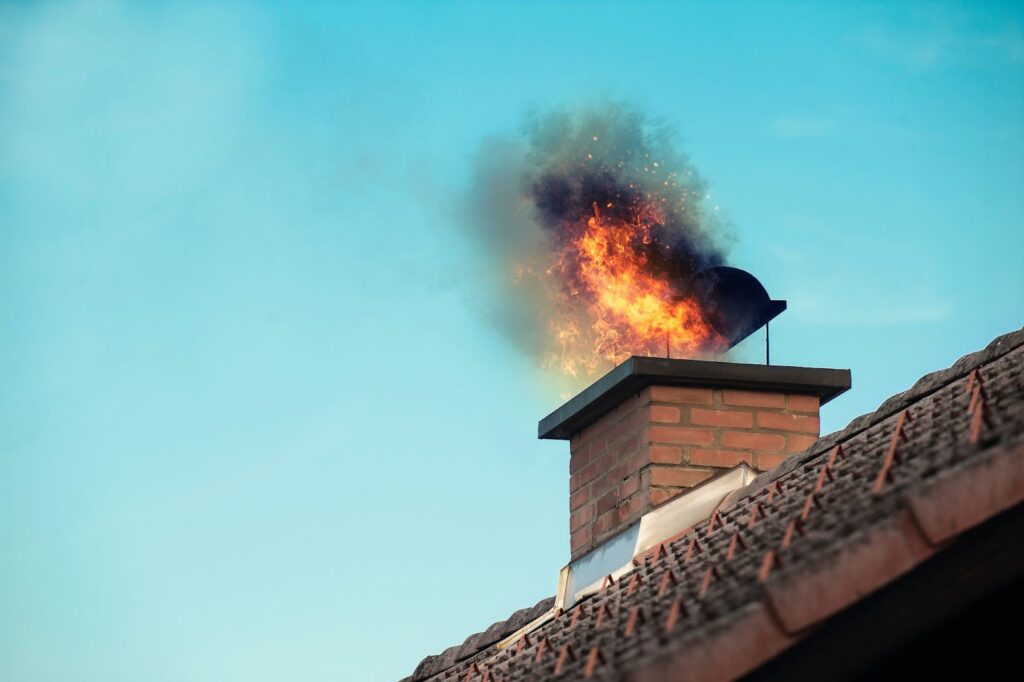
Beware, if you really do have sparks shooting out of the chimney, something is wrong with how it was built or how it’s currently functioning. Definitely hire a chimney inspection to get to the bottom of it.
Smoke & carbon monoxide- Chimney caps allow smoke and carbon monoxide to exit the home. They do NOT block these substances from exiting the structure unless your cap was installed incorrectly preventing proper airflow.
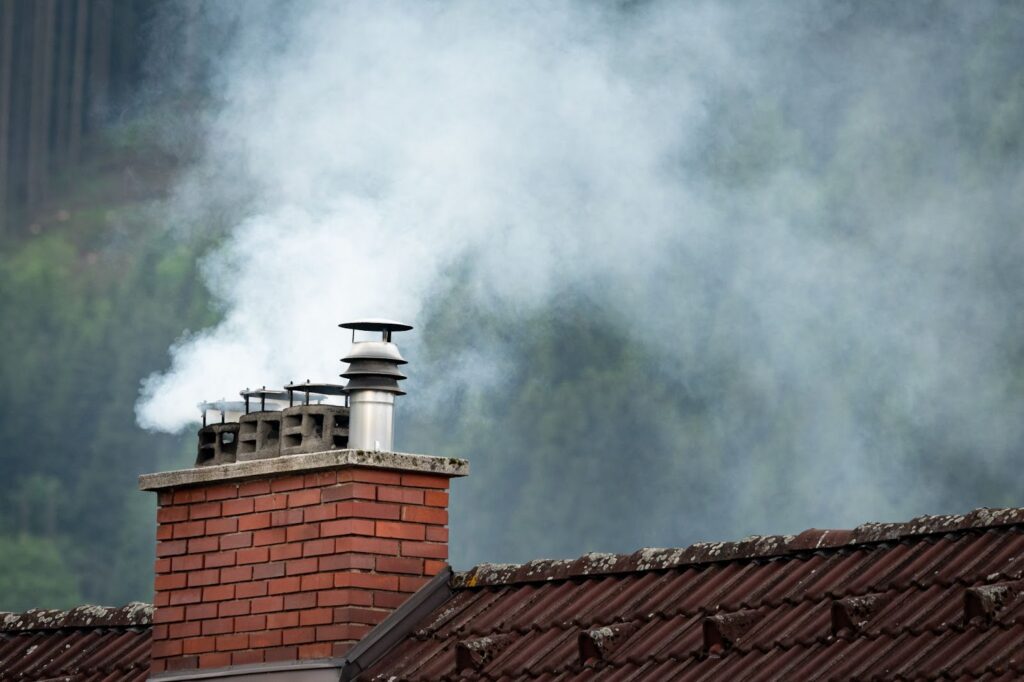
Are chimney caps a standard size (what size do I need)-
Chimney caps typically come in standard sizes, but it is possible to have a custom chimney cap made as well.
Common size chimney caps for masonry chimneys are 8×8, 8×13, 8×17, 13×13, and 13×17.
Sizes are determined by measuring the size of the chimney flue. To do this, measure the inside dimensions (length and width) of the chimney flue with a measuring tape. It may be helpful to measure from the top of the flue to the top of the chimney crown as well.
We recommend hiring an expert to come measure your chimney flue and fit the chimney cap to ensure a safe and correct install.
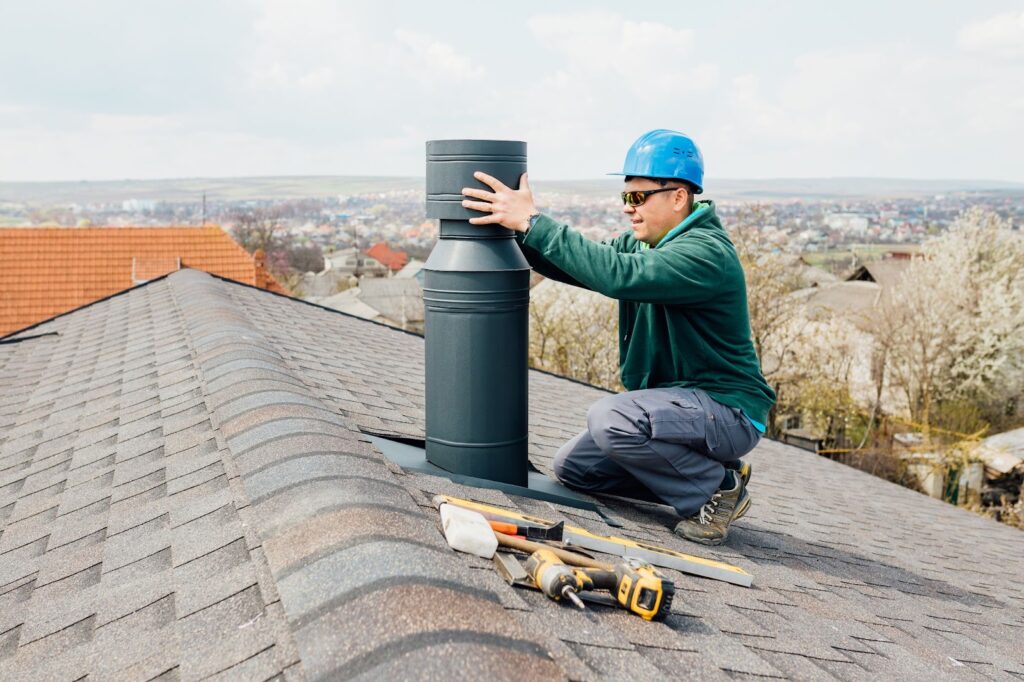
Get someone who knows how to measure and try to choose a stainless steel or copper chimney cap. These are extremely durable and could virtually last forever.
Are chimney caps required by code-

Here in Minnesota they are.
Check out what the 2020 MN Residential Code has to say:
R1003.
Masonry chimneys shall have a concrete, metal or stone cap, a drip edge and a caulked bond break around any flue liners in accordance with ASTM C1283. The concrete, metal or stone cap shall be sloped to shed water.
The 2015 International Code also states that masonry chimneys should have a chimney cap.
See below:
R1003.9.1 Chimney caps.
Masonry chimneys shall have a concrete, metal or stone cap, a drip edge and a caulked bond break around any flue liners in accordance with ASTM C1283. The concrete, metal or stone cap shall be sloped to shed water.
Warning!
The manufacturers of certain relining materials do require chimney caps in order for it to be considered a proper and complete install. Failure to include a chimney cap in these instances would void your warranty.
Get a free quote on your project!
Ready to start your project? Reach out to Complete Building solutions and get a quote absolutely free.
Can a chimney cap stop a downdraft-
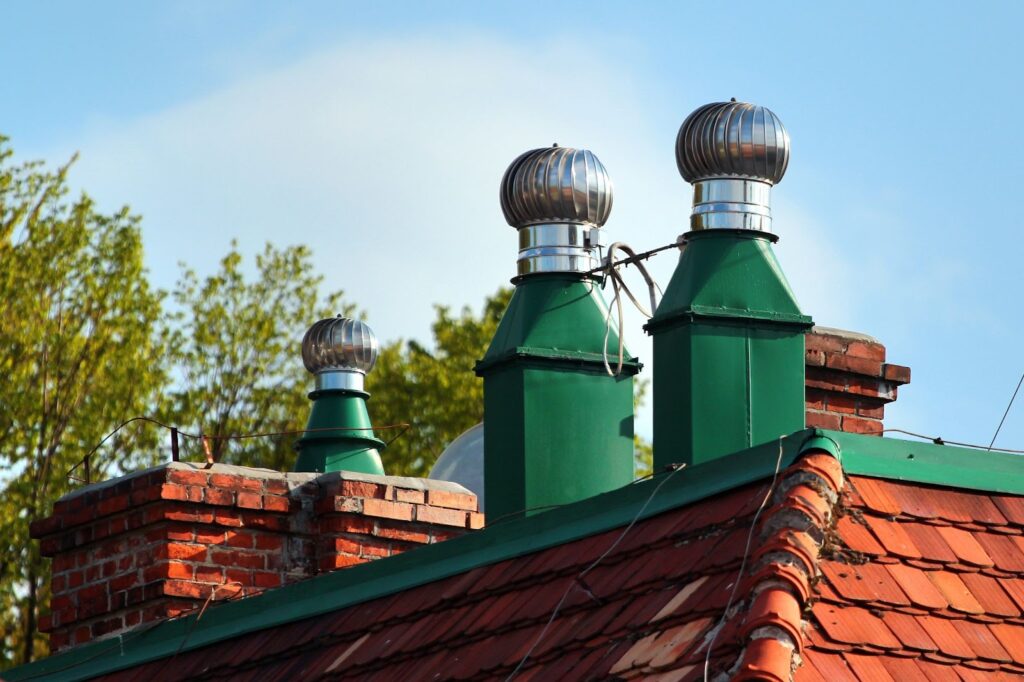
Certain chimney caps can help with stopping a downdraft. They can also contribute to the issue in certain cases. The angle of the chimney cap will determine the direction the wind will be directed; down the chimney or away from the home.
One example of a chimney cap that deflects wind is the FAMCO Wind Directional Chimney Cap. It actually rotates and aligns with the wind direction.
There is also the Chimcare Air Cooled Wind Directional Chimney Cap. This stainless steel chimney cap is custom made here in the United States.
If you live in a very windy area, ask your chimney professional to recommend the best option for your home.
When to replace a chimney cap-
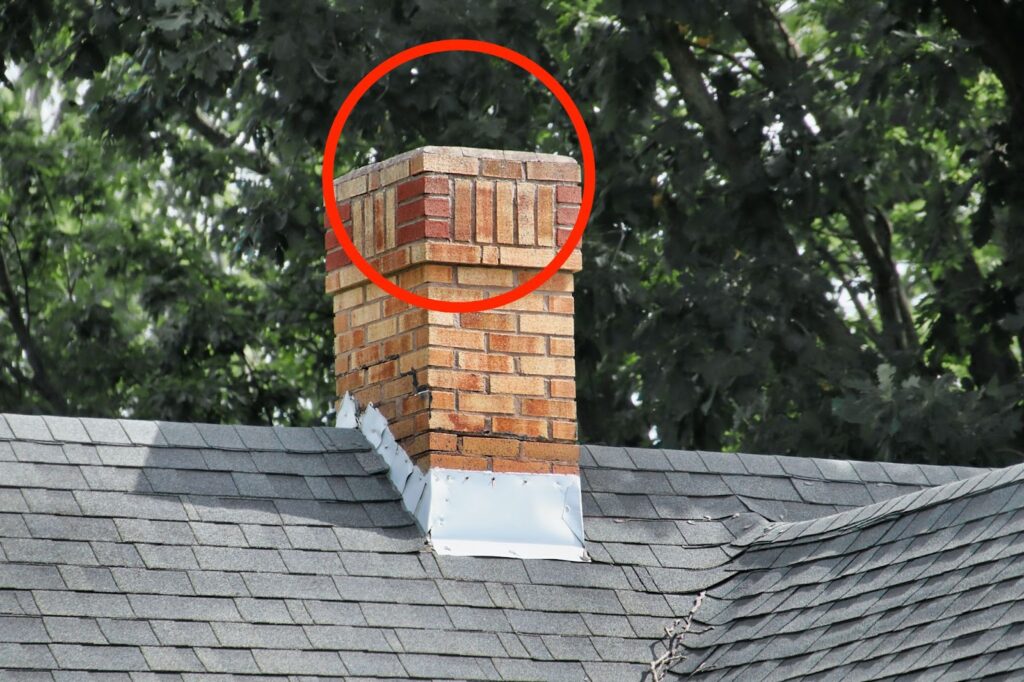
Making sure your chimney cap is in working condition is essential to preserving the integrity of your fireplace over time.
If you notice any of the following it’s time to replace or repair the chimney cap:
- Excessive rust on the chimney cap or mesh screen
- Creosote has built up on the screens
- A chimney fire damaged the cap
- Water is leaking in around the flue
- Holes in the mesh screens or the screens shape is deformed
- Water & debris accumulating in the firebox or is clogging the chimney flue
- The chimney cap is missing altogether
- You’ve started to notice downdrafts
- The top of the chimney cap appears warped and is moving away from the sides
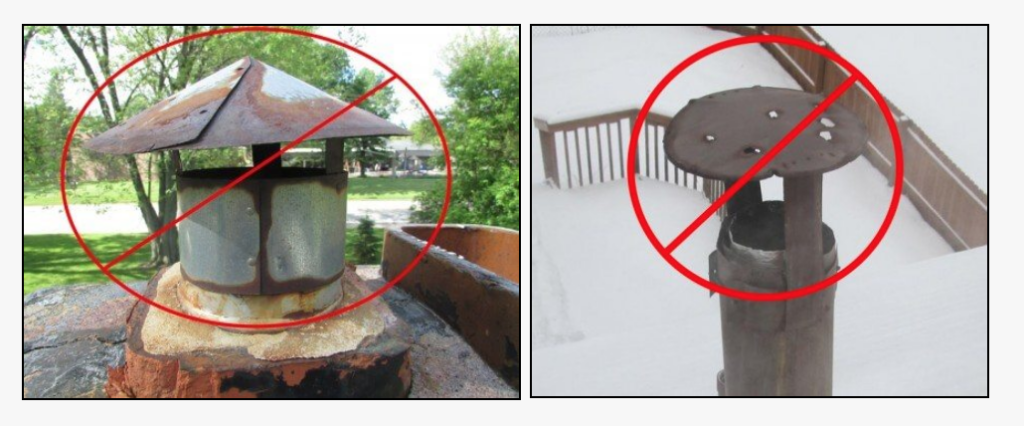
Remember to schedule your annual chimney inspection.
Will a chimney cap keep bats out-
Chimney caps may deter bats and other critters from entering the chimney. You may have more luck keeping them out when you purchase a stainless steel cap with a screen. Bats will not be able to chew through these. These are not fail proof though. Bats are capable of squeezing through tiny spaces.
Most chimney technicians and pest control professionals will recommend them for multiple reasons including keeping bats outside where they belong.
What chimney cap is best-
When it comes to the material that chimney caps are made out of, we think stainless steel is the best.
Best chimney cap material-
#1 Stainless steel-
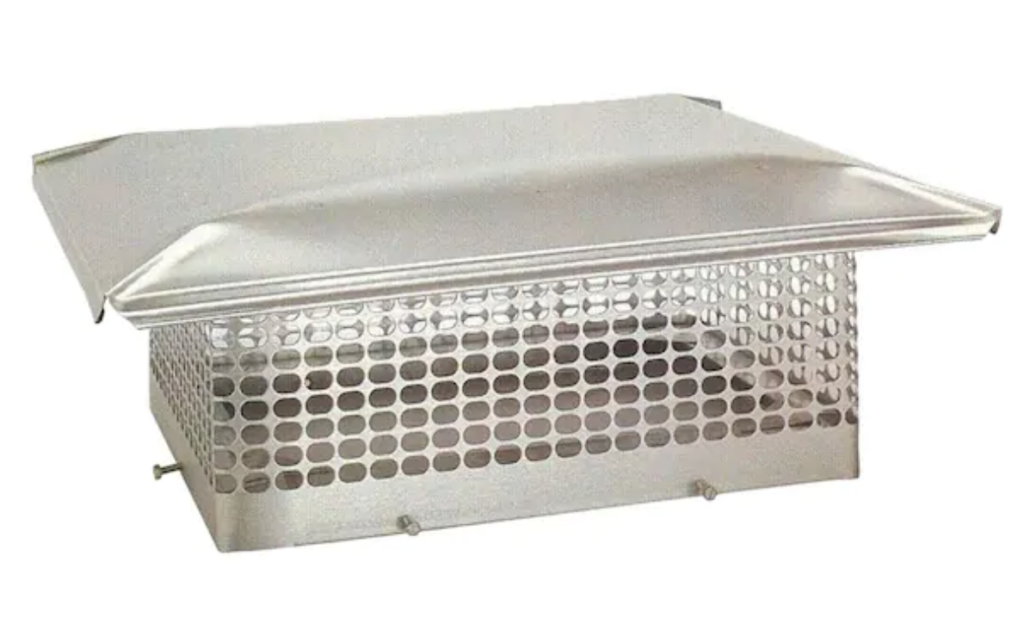
Stainless steel caps are extremely durable and require little to no maintenance. Most chimney professionals will recommend stainless steel caps because they can withstand almost all weather, are very functional, do not rust and offer a shiny clean look. You will pay a bit more for them, but it’s worth the price.
#2 Copper-

Copper chimney caps are also very durable and provide that classic look many homeowners are looking for. They actually are heavier and oftentimes stronger than stainless steel. However, copper may require a little extra TLC than stainless steel in order to prevent them from turning green and losing their shine. Sought after for their elegant aesthetics, copper can cost 2x as much as stainless steel and 4x as much as galvanized steel.
#3 Aluminum-

Aluminum chimney caps are definitely cheaper than copper or stainless steel. Although they are resistant to corrosion, they cannot compete with the previous two options in regards to durability. The “light” nature of aluminum makes it more susceptible to wind/weather damage. They are a bit better than galvanized steel in that they hold up against corrosion.
#4 Galvanized steel-
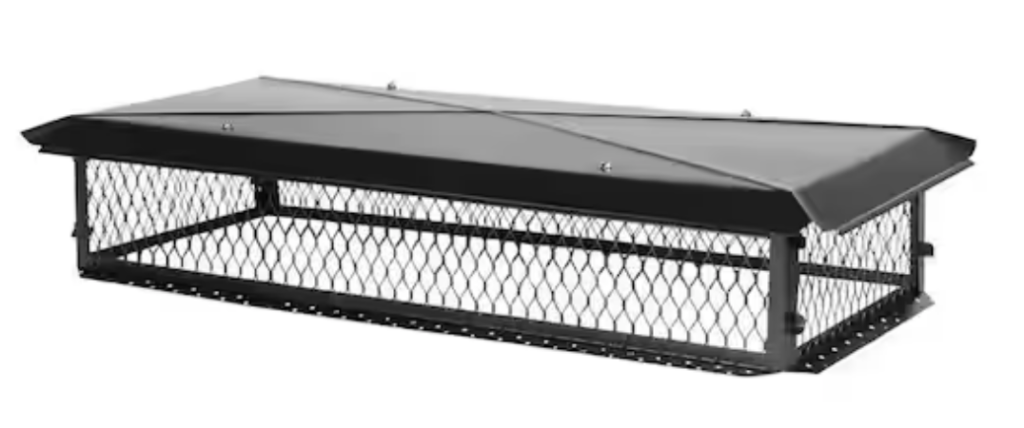
Galvanized steel will be your cheapest chimney cap option. This material does tend to corrode and rust and they are not very strong. You could expect to get five “ish” years out of a well made galvanized steel chimney cap.
Best type of chimney cap-
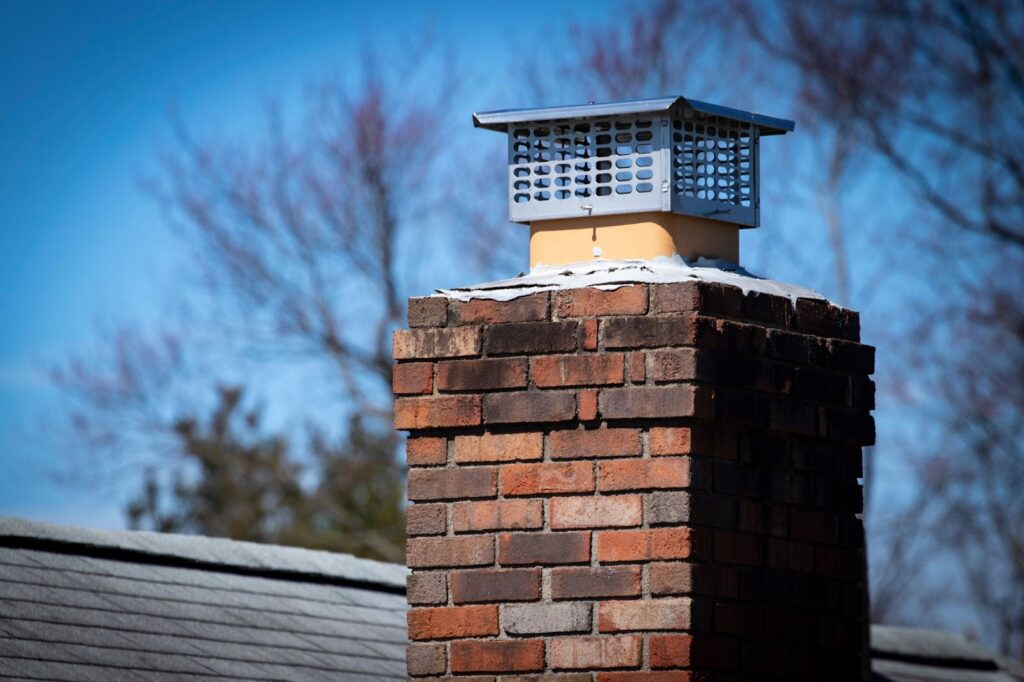
When choosing a chimney cap it’s important to know if your prefabricated chimney is air-cooled or insulated. How to tell? Take a look at your chimney pipe. If you notice a double or triple wall pipe with an air gap, it’s air cooled. When looking at an insulated chimney pipe it appears to be one single pipe approximately 1” thick.
You also need to know if your chimney has one flue or multiple flues. This would determine if you need a single or multi flue cap.
Knowing this information will help you when browsing through chimney cap options. Let’s jump in.
Note- Chat with a professional before choosing a chimney cap.
Masonry fireplace-
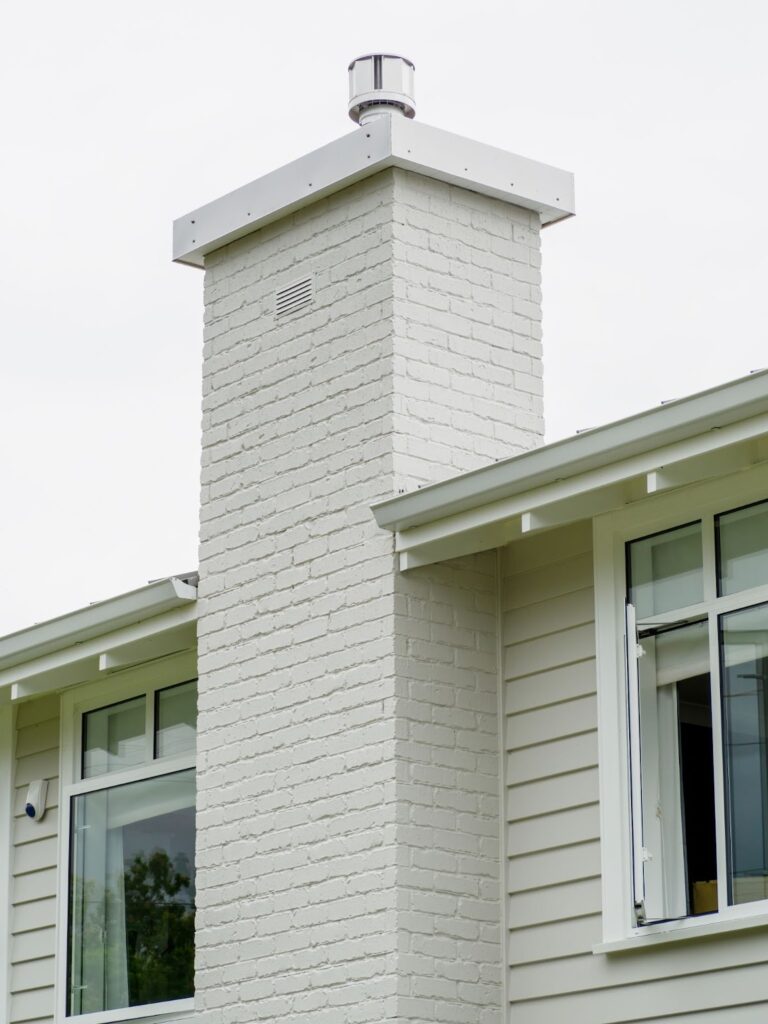
If your chimney is made from brick or stone, you have a few options.
-Single flue chimney with extended flue: This style of chimney has one flue that extends above the crown. They are usually square, rectangular, round or oval. In order to choose your chimney cap, you need to know the flue shape.
- Square, rectangular and oval flues- Use clamps or screws to attach
- Round- Clamps/screw for attachment or utilize a “slip-in” cap that sits in the flue.
-Single flue chimney without extended flue: The chimney flue on these is flush with the chimney crown. Choosing your chimney cap is dictated by flue shape.
- Square, rectangle and oval- You’ll need to use legs or brackets.
- Round- Use a model that will sit in the flue opening.
-Single flue chimney with flexible metal liner: You can only use a slip-in chimney cap.
-Multi-flue chimneys: When dealing with multiple flues a top-mounted chimney cap is necessary. It does not matter if the flue is extended in this case.
Factory Built Round Metal Chimney-
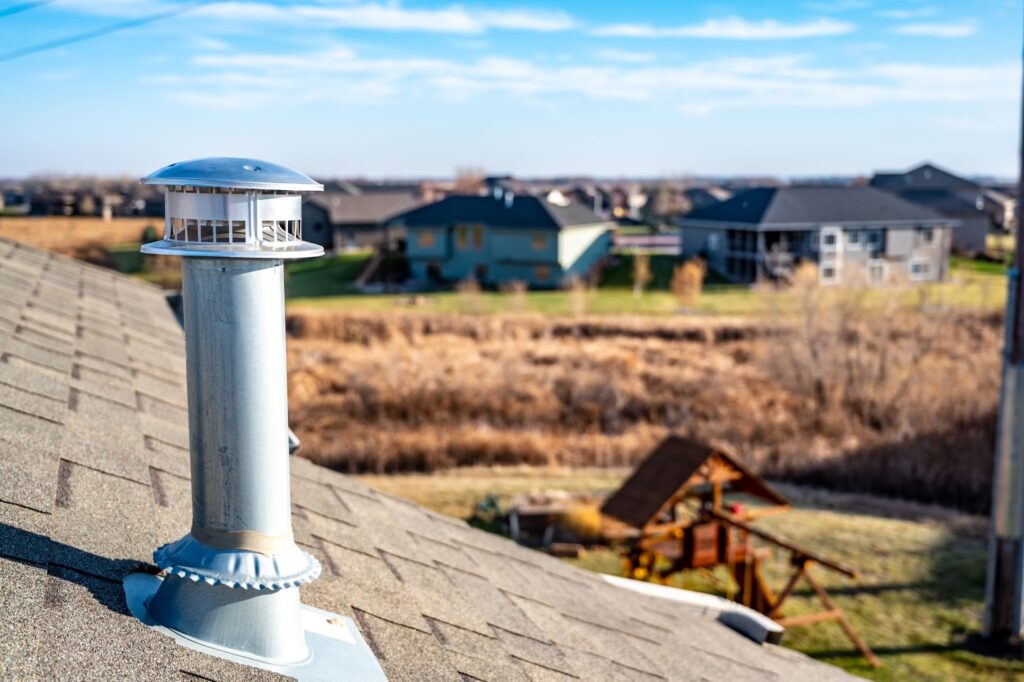
Single wall metal chimney: You can easily spot these because they look like a metal pipe. It’s common to see these venting wood-burning stoves.
- Chimney cap that fastens to the flue exterior- These attach to the outside of the flue with clamps or screws.
- Chimney caps that slip into the flue- These caps sit right into the flue.
Double-wall air cooled metal chimney: These chimneys have two metal walls divided by a gap that uses the air in between the meals to cool the flue.
- Use a cap that was manufactured by the same company as the chimney.
Triple-wall air cooled metal chimney: These are the same as the double-wall air cooled metal chimneys but with three walls.
Specialty Chimney Caps-
- Wind-directional chimney caps-

These are great for homes that have issues with wind-induced downdrafts and are a common choice for factory-built metal chimneys. They can resist severe wind pressure, prevent wind from going down the flue causing downdrafts and capture the wind to generate better updrafts.
- Wind-resistant (high wind) chimney cap- These caps are perfect for a home located in a high wind area and if you have a metal air-cooled chimney. They reduce downdrafts by literally blocking the path of exterior air from entering the chimney. Typically, these chimneys sit right inside the flue versus traditional chimney aps that bolt to the flue/chimney crown.
- Hurricane or storm chimney caps-

This style of chimney cap does not have a traditional mesh exterior but rather a solid layer of walls designed with good airflow in mind. Hurricane chimney caps are much sturdier and can withstand areas with intense storms.
- Electric draft-increasing chimney caps-

This type of chimney cap can be helpful when no other options are relevant. They work like a cap and draft inducer. There are actually electric fans utilized to control your chimney’s draft.
- Chimney cap & damper combos-

Older masonry chimneys are prone to heat loss when the fireplace isn’t in use. Of course, this hits the pocketbook. A cap and damper combo can help fix this problem. The damper will sit on top of the flue and is run by a cable that extends down to the lever mounted on the fireplace well. These products are available for square and rectangular chimneys.
- Outside-mount chimney cap- Traditional caps are secured onto a chimney flue or crown. These outside-mount chimney caps actually go over the crown and attach to the chimney. This style of cap is chosen when there are multiple flues, unique-shaped flues or issues with the existing chimney crown. Outside-mount chimney caps offer great protection from the elements and are typically custom made.
- Flue stretcher chimney cap-
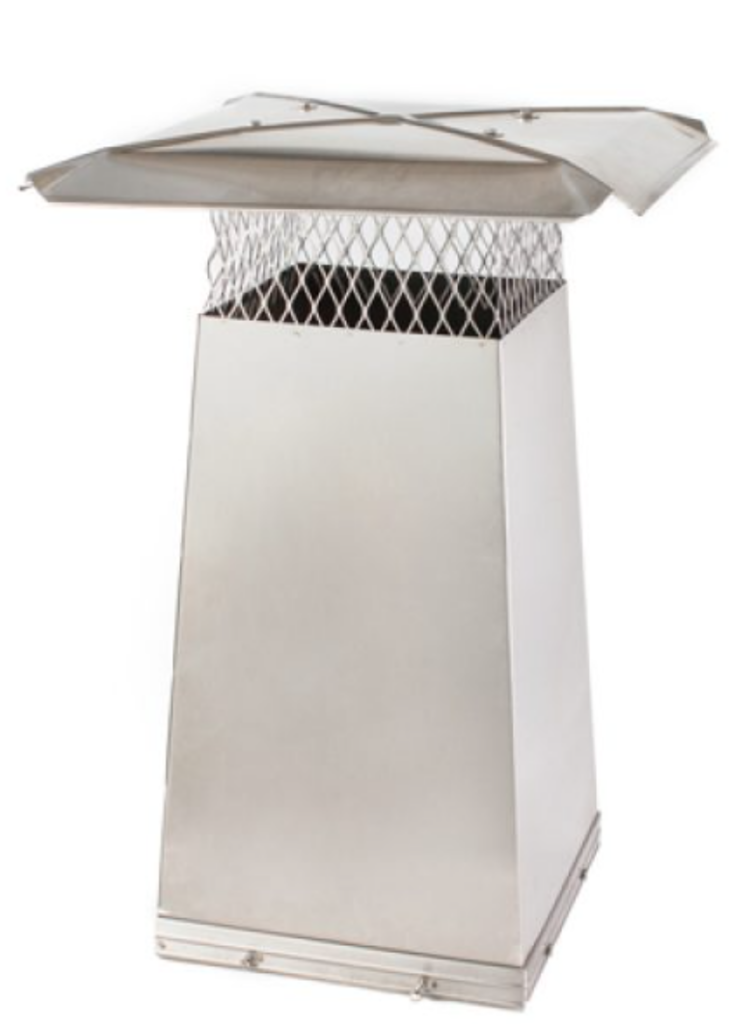
These chimney caps are often used when there are issues with a fireplace allowing smoke into the home. Oftentimes, the root of the problem is that the actual masonry chimney is not long enough, could be lower than roof line and causing downdraft issues. In this case, a flue stretcher will actually increase the length of your flue by a few feet in order to improve air to the flue.
To learn more about various types of chimney caps click here.
Where to buy a chimney cap-

You can buy chimney caps at any home improvement retailer such as Lowes, Home Depot or Menards.
You can also purchase your chimney cap from any fire retailer online.
Check your local fireplace store as well.
Who installs chimney caps-
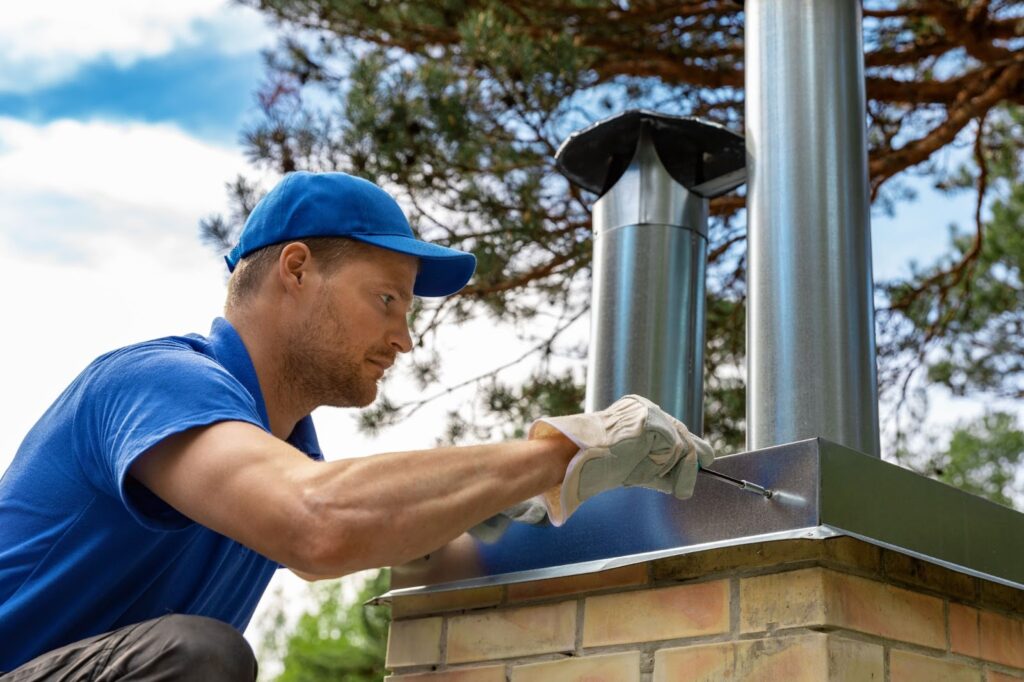
Any chimney service or chimney sweep business will install a chimney cap for you. There are also some construction companies that would be able to do this.
How to find a local chimney service?
Ask for a referral from neighbors, friends, family, your contractor, architect, engineer, flooring professional or home inspection company. It’s always best to hire someone who has been vetted by your community.
If that doesn’t work, pop on a search engine and type “chimney sweep” or “chimney service” near me.
Here are a few tips to consider before hiring a chimney service:
- Will the company provide you with references?
- Does the company carry liability insurance?
- Does the company employ certified chimney technicians?
The chimney industry is unlicensed meaning licensure is NOT required to work in the field. However, there are certifications that ensure the company you hire has the knowledge and know-how to perform work on your chimney in line with industry standards.

One of the most common credentialing agencies out there is the CSIA, The Chimney Safety Institute of America.
The CSIA even claims the following on their website:
“For more than 30 years, the Chimney Safety Institute of America (CSIA) has made it easier for homeowners to find reliable, experienced, highly-trained chimney and venting professionals.
When you choose a CSIA-certified technician, you can be confident you’ve made a good choice. There’ll be no question that the professional on the job is experienced, qualified, and knowledgeable — you’ll know they are.”
Keep in mind, the CSIA isn’t the only legitimate certification out there. If your chimney technician has a different certification, just check it out. Make sure the organization providing certification is well respected in the industry.
Well, there you have it. Everything and anything you wanted to know about chimney caps. If you have any additional questions, please feel free to give us a call at 763-544-3355.

